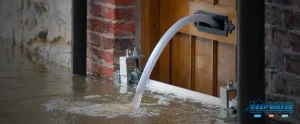Molds exist everywhere. All year long, mold spores can be found outdoors as well as indoors. These fungi are made up of seeds called “spores” that travel through the air. Some spores are more likely to thrive in dry and windy conditions, while others can spread through fog or dew in high humidity. At night, outdoor mold is most active, especially if the air is foggy or damp.
Types of Outdoor Molds
There are many types of molds found outside, but only a few can lead to outdoor mold allergy symptoms. These can be found in fallen leaves, rotten logs, grasses and grains, compost piles, and in many other places where there is excess moisture. Some of them are classified below.
1. Cladosporium
This is considered as the most common outdoor and airborne mold.
2. Epicoccum
A mold species commonly found in grasslands and in places devoted to agriculture.
3. Alternaria
This is one of the types of outdoor mold that has been linked to severe asthma attacks on people suffering from the condition.
4. Fusarium
This is a fungus that usually lives in rotting plants.
5. Aspergillus
A mold that thrives both indoors and outdoors. Aspergillus is often associated with allergic bronchopulmonary asthma, which can cause severe lung reactions. If not treated, this could lead to bronchiectasis, a condition where there is severe bronchial enlargements.
6. Smuts
A mold that abounds in areas where agriculture is commonly practiced
7. Aureobasidium
An outdoor mold that can be found on paper, lumber, and painted surfaces.
8. Mucor and Rhizopus
Two outdoor molds found in decaying leaves. Unlike other molds, these are not airborne.
When Are Outdoor Mold Levels High?
Molds are more common in colder climates. They can be found outdoors from late winter through the early summer, and usually peaking during the late summer and early fall months (July-October). Meanwhile, in warm places, mold spores can be found throughout the year, but the highest levels are normally recorded in summer and in early fall. During this time, it’s not surprising if you show a few outdoor mold allergy symptoms.
For indoor mold, growth is sometimes dependent on the conditions outside. If there is an excessive amount of outdoor mold, there’s a good chance that mold levels inside the home will rise significantly.
Ways to Avoid Outdoor Molds
Since molds exist practically everywhere, it’s understandable if some people will panic. Nevertheless, there are several simple ways that you can do to prevent molds from growing outside or limit your exposure to them so you can keep those allergies away. These include the following:
1. Stop and Think
Mold is more common in certain types of businesses and stores. These include antique shops, farms, greenhouses, and flower shops. If you need to visit these places, it’s best that you wear a mask. If you have an outdoor mold allergy, take your medication before stepping out.
2. Track the Mold
Pay attention to outdoor mold spore count. If they are high, you should not spend too much time outdoors.To help you stay on top of things, you can follow agencies that track mold presence regularly. A good example is the National Allergy Bureau which sends out email alerts to its followers.
3. Filter the Air
Install a high-efficiency HEPA filter attachment to your air conditioning unit. This will trap and remove outdoor molds. Also, it is important that you keep drain lines and AC drip pans clean to prevent mold growth.
4. Clean the Gutters
It pays to check your gutters to see if they are dry and clean. It’s common for damp and dead leaves to fall in this part of the house, making it an ideal breeding ground for mold spores.
5. Check the Yard
Keep your yard dry by doing routine cleaning. Start by sweeping away all dead leaves scattered all around the place. Cut off excess branches of your plants and shrubs, and ensure that rainwater moves straight away from your home when they fall. This is especially important if you live in a shaded area where water takes longer to dry.
6. Keep Molds Out
If there are glass or plastic items, old newspapers, cardboards, or any other materials that are no longer being used inside the home. place them inside a box and throw them away in the garbage can outside for pick up by garbage collectors. This should keep your place clean and prevent molds from growing both inside and out.
7. Check Your Plants
If you have a garden at home filled with different types of plants, regular maintenance is recommended to prevent outdoor molds from spreading. In particular, you should check the plant leaves and ensure that they remain fresh. If you see any signs of decay, you should go ahead and cut off the affected leaf or leaves.
8. Stay Clean
Mold thrives in uncut fields and in heaps of damp leaves, so if you can, it’s best to stay away from these places. If you must mow the lawn, do some gardening work, or throw away the trash, take the necessary precautions like wearing a dust mask. After doing these things, take a shower once you get inside to wash off any mold spores that may have attached themselves to your hair and skin.
Key Takeaway
Mold growth is often seen by many people as an indoor thing. However, this fungus can also live outside your home; it can actually thrive anywhere as long as there is moisture present.
Outside, molds can exist in decaying wood, rotting plants, fallen trees, agricultural lands, and even in the gutter of your house where dry leaves may have collected. If you have allergies or asthma, exposure to these mold types can trigger an attack. To prevent this from happening, you can do regular outdoor cleaning, particularly in your yard, lawn, garden, and the gutters. If you have outdoor plumbing, it’s best to call a plumber who will look for any potential damage, including mold growth.
Deep Water Emergency Services & Mitigation is the mold mitigation expert that you should call.
For mold problems, Deep Water Emergency Services & Mitigation is the only company that can help you. We handle all types of molds, including those that live indoors and those that float in the air just outside your home.
We have a mold mitigation Denver, CO, expert who will schedule a visit to your place to confirm any mold infestation and will readily provide you with the most appropriate solution, including an outdoor mold remover. Call us now so you can have a cleaner and safer home inside and out.






